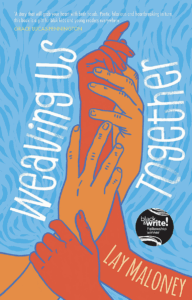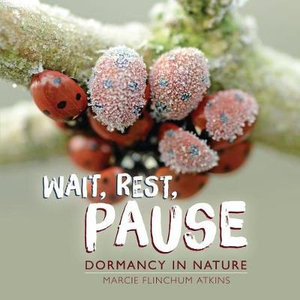Lay Maloney, Weaving Us Together, Lothian Children’s Books, August 2025, 297 pp., RRP $19.99 (pbk), ISBN 9780734423559
Lay Maloney is a prize-winning, genderfluid, young Australian Indigenous writer. The completion of this novel was made possible by winning the State Library of Queensland Black&Write! Fellowship. This, Maloney’s debut Young Adult novel, set in a Queensland coastal town, is a lovingly detailed, and sometimes startlingly provocative, record of a friendship group at the cusp of adolescence.
The five friends are thrown together in part because they are aboriginal, and each one of them is coming to terms with life at High School — and more, much more. Jean O’Ryan, nearly thirteen at the start of the novel, narrates the events of her story and those of her friends, covering the years 2011 to 2013. Jean is the daughter of a man who was taken in childhood from his Aboriginal family. Her white mother died not long ago of illness. Of the other friends, Seraphina lives with her mother, an Aboriginal woman who is a weaving artist; Lulu is dealing with a neglectful home situation that leaves her constantly angry; Ariel is the smart, crafty and loyal one, especially close to Lulu; then there is Bryan, the one boy among a group of girls.
Lay Maloney has a special gift for portraying characters in dialogue that’s authentic, witty, smart, spontaneous and affectionate. In this respect, it seems they might have learned from some of Melissa Lucashenko’s novels that attention to this kind of realism is a delight to readers.
Be prepared for the slow burn of this novel to confront its reader with many of the dilemmas, questions and accusations that swirl through contemporary society. Lesbian love, gender fluidity, teenage pregnancy, questions of who can plausibly and authenically claim Aboriginality, whether it matters how dark one’s skin is, death in custody, cross-generational misunderstandings about binary gender ideas, the problems of alcohol for struggling families, suicide and early deaths in Aboriginal communities, teenage drinking, and the recovery of identity for members of the stolen generations are all eventually opened out or touched upon in this novel. But mostly the novel carries a message of tolerance.
It is a tour de force from this young writer who I am sure will make a distinctive generational mark upon literature in Australia for both youth and adults. Recommended for readers from 12 to 112. A Q and A with the author is available at the publisher’s website.
Reviewed by Kevin Brophy





